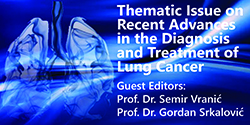Objective assessment of diagnostic tests validity: a short review for clinicians and other mortals. Part II
Keywords:
Accuracy, Likelihood ratioAbstract
The whole point of a diagnostic test is to use it to make a diagnosis,thus the obvious need is to know how accurately aparticular diagnostic test detects patients with or without adisease. In order to know it, a clinician or a researcher shouldhave a basic understanding of the principles of objectiveappraisal of diagnostic test. In the second part of this shortreview, the author presents the most common biostatisticalmethodology for assessment of a validity of diagnostic tests.Definitions and interpretations of accuracy and likelihoodratio are also provided together with methods of their calculation.References
Lok AS, McMahon BJ. Chronic hepatitis B. Hepatology.
;34:1225-41.
Cadranel JF, Rufat P, Degos F. Practices of liver biopsy in France: results of a prospective nationwide survey. For the Group of Epidemiology of the French Association for the Study of the Liver (AFEF). Hepatology. 2000;32:477-81.
Greenhalgh T. How to read a paper. Papers that report diagnostic or screening tests. BMJ. 1997;315:540-3.
Altman DG, Bland JM. Diagnostic tests 2: Predictive values. BMJ. 1994;309:102.
Halkin A, Reichman J, Schwaber M, Paltiel O, Brezis M. Likelihood ratios: getting diagnostic testing into perspective. QJM. 1998;91(4):247-58.
Fagan TJ. Letter: Nomogram for Bayes theorem. N Engl J Med. 1975;293:257.
Okada T, Rao G. Using the likelihood ratio. J Fam Pract. 2005;54:127-8.






